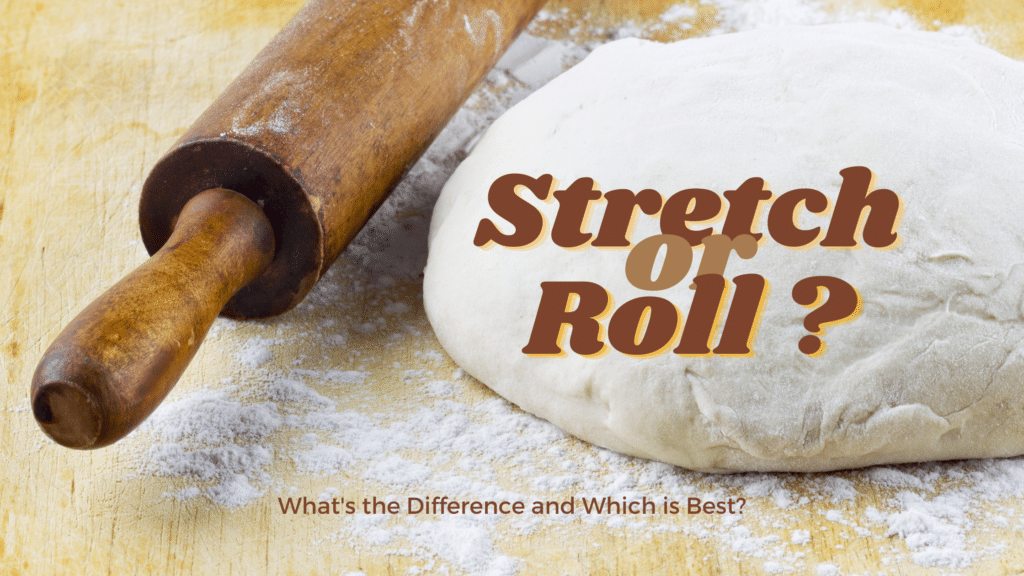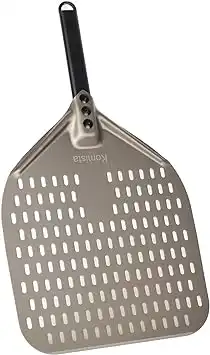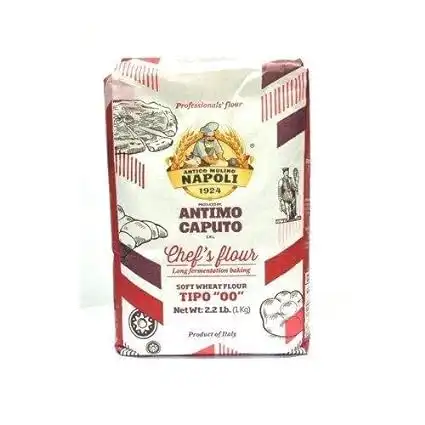Making homemade pizza is a culinary adventure that brings the aroma of Italy right into your kitchen. One key and perhaps the most crucial step is shaping the dough into the perfect base for your toppings.
There are two main techniques for doing this: rolling and stretching.
From rolling vs stretching pizza dough which method is truly the best for your homemade pizza?
Does the rolling pin triumph for its ease and uniformity, or does hand-stretching steal the show with its rustic charm and air-filled crust?
This post will delve into the art and science of shaping pizza dough. We’ll explore the differences between rolling and stretching, how each technique impacts the texture and taste of your pizza, and provide tips for mastering both methods.
Whether you’re an aspiring home pizzaiolo or simply looking for ways to improve your pizza game, this guide is designed to help you navigate the dough-shaping journey.
By the end, you’ll better understand which method suits your pizza style and preference. So, let’s get started and delve deep into the doughy world of pizza making!
Let’s find out!
Here’s What You Will Find:
Rolling Pizza Dough
Rolling pizza dough is a straightforward process. First, let your dough rest at room temperature for about an hour. Then, on a clean, floured surface, place your dough and begin to flatten it using the heel of your hand. This initial action creates a disk shape that makes it easier to start rolling.
Using a floured rolling pin, start from the center of the dough and roll outwards, rotating the dough periodically to maintain a circular shape. Continue rolling until you’ve achieved your desired thickness. If the dough resists and springs back, let it rest for a few minutes to relax the gluten, then continue rolling.
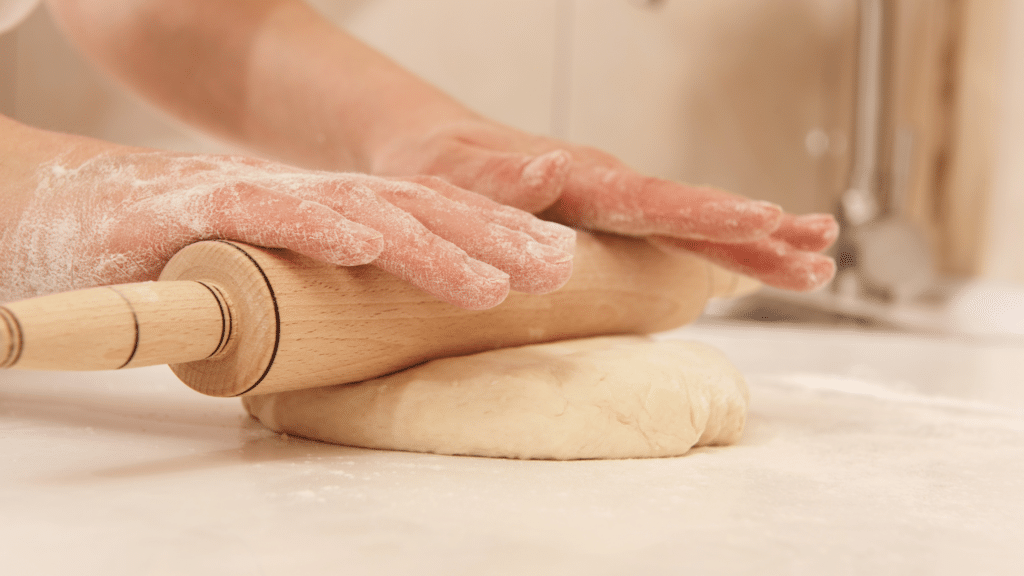
Once rolled, the dough can be transferred to your baking sheet or pizza stone.
Benefits of Rolling Pizza Dough
Rolling is an excellent method for beginners because it requires less skill than hand-stretching and helps achieve a uniformly thick crust. It’s also the best way to achieve a very thin crust, which is perfect for certain styles of pizza.
Drawbacks of Rolling Pizza Dough
There are some potential drawbacks to consider. Rolling can push out the gas bubbles formed during fermentation, creating a denser and less airy crust. The crust might also lack the rustic, handmade look that some pizza lovers appreciate.
When is Best to Roll Pizza Dough
Rolling is ideal for pizza styles requiring a thin, crisp, uniform crust. This includes styles like thin-crust pizza, bar-style pizza, or a classic New York-style pizza. It’s also an excellent choice when making large quantities of pizza, as it can be faster and more consistent than hand-stretching, especially for those who are less experienced in pizza making.
Check our article How to Roll Pizza Dough for more info.
Stretching Pizza Dough
Stretching pizza dough is a more hands-on process requiring some practice. Start by letting your dough rest at room temperature for about an hour. This makes the dough more pliable and easier to work with. Place your dough on a lightly floured surface and begin by pressing it down with your fingers, starting from the center and working your way out, leaving a slightly thicker edge for the crust.
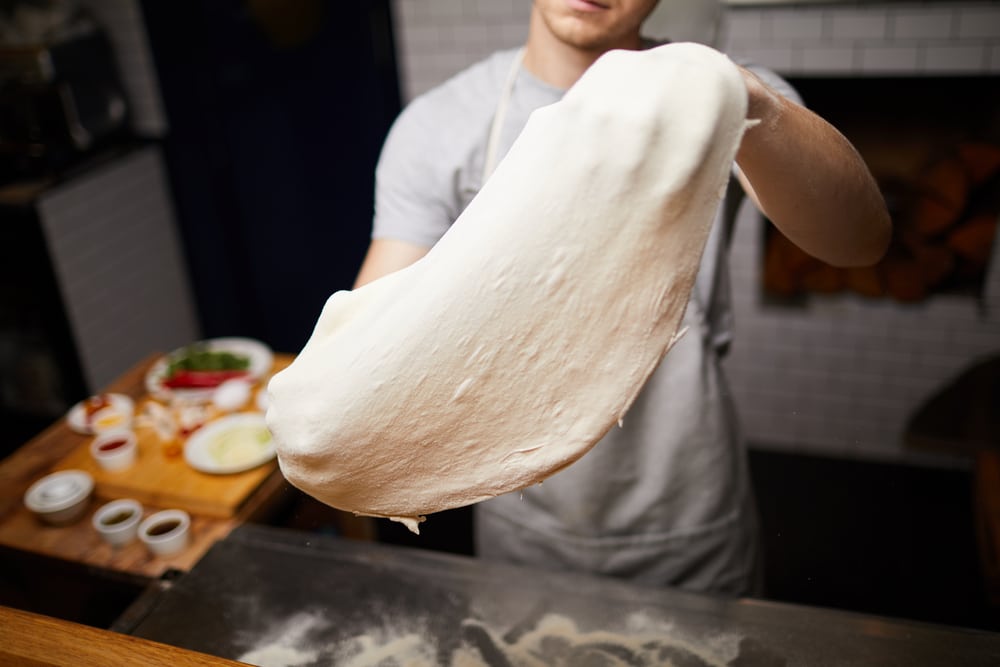
Then, pick up the dough, and drape it over your knuckles, allowing gravity to help stretch it while you gently turn and pull it. The goal is to stretch it evenly without tearing it.
Benefits of Stretching Pizza Dough
One of the main benefits of stretching pizza dough by hand is that it can create a lighter, airier crust. This is because the process of stretching is gentler than rolling and allows more of the gas bubbles to remain in the dough. You’ll also end up with a more rustic, artisanal-looking pizza.
Drawbacks of Stretching Pizza Dough
The process of stretching pizza dough can be a bit challenging for beginners. Learning how to stretch the dough evenly without tearing it requires practice. It also generally takes longer than rolling, which could be a drawback if you make multiple pizzas.
When is Best to Stretch Pizza Dough
Stretching is the traditional method used for Neapolitan-style pizzas, which are known for their tender, chewy crusts with large air bubbles. It’s also preferred for any pizza style where a thicker, more robust crust is desired, like in many artisan-style pizzas.
Finally, stretching is the method of choice for those who value the hands-on experience of pizza making and the unique, rustic appearance it gives each pizza.
Should You Roll or Stretch Pizza Dough?
Both stretching and rolling can be used to shape pizza dough, but they affect the final product differently.
Rolling
This method is easier for beginners as it requires less skill and can yield a more uniform thickness. However, it can compress the dough and push out the gas bubbles formed during proofing, resulting in a denser, less airy crust. If you want a thin, uniform, and crisp crust, like for a thin-crust or bar-style pizza, rolling can be a good choice.
Stretching
More experienced pizza makers often use this method, which can take some practice to do well. It involves gently pulling and rotating the dough to extend it. The advantage of this method is that it allows the dough to retain more of its air bubbles, leading to a lighter, more tender crust with a desirable chew. This is the method often used for traditional Neapolitan-style pizzas.
Regardless of the method, letting your dough rest and come to room temperature before shaping is important. This makes the dough easier to work with and helps prevent it from springing back.
Remember to be gentle in both processes to avoid tearing the dough. If the dough resists stretching or rolling, let it rest for a few minutes to relax the gluten, then try again.
Whether you should roll or stretch your homemade pizza dough is entirely your discretion.
If you’re in front of a yield sign, you must decide where to go, stretch or roll your dough.
To know which route you will take, ask yourself what YOU want. How do you like it?
If you want a thin-crust pizza or pan-grilled, you might want to roll it out.
Alternatively, stretching may be the way to go if you are more into light, airy, and pliable crust pizzas.
If you decide to stretch the dough by hand, it would be best not to use a rolling pin for pizza, as the dough will lose all the accumulated gas and all the characteristics of a stretched dough, and you will end up with a thin, dense crust.
Check our article How to Stretch Pizza Dough for more info.
Best Pizza Dough Preparation Method by Pizza Style
When crafting the perfect homemade pizza, the method you use to prepare your dough can significantly impact the final product. The technique you choose—rolling vs stretching pizza dough—can influence the crust’s texture and thickness, which are key elements in differentiating pizza styles.
In the table below, we’ve outlined which method is generally best suited to various types of pizzas. Remember, these are guidelines, and individual tastes or specific recipes may call for adjustments.
Let’s dive in:
| Pizza Style | Best Pizza Dough Preparation Method |
|---|---|
| Neapolitan | Hand-Stretching |
| New York | Hand-Stretching |
| Sicilian (Thick Crust) | Rolling |
| Chicago Deep Dish | Rolling |
| Thin Crust | Rolling |
| St. Louis | Rolling |
Please note that these are just general guidelines. Personal preference and specific recipes may dictate a different method of dough preparation. It’s always best to follow the recipe’s instructions when making a specific style of pizza.
How Can You Tell If the Dough is Rolled or Stretched?
We all love pizzas! Pizzas continue to dominate our everyday lives, thin, dense, and deep-dish, with their many variants and flavor elements.
But how exactly can you tell if a pizza is rolled or stretched?
Once the pizza is baked, it can be difficult to definitively tell if the dough was rolled or stretched based purely on the appearance or texture of the finished pizza.
However, some signs might give you a clue:
- Crust Texture: Hand-stretched dough often results in an uneven crust, with some areas thicker than others, and it typically has larger air bubbles, creating a more airy and chewy texture. Rolled dough, on the other hand, tends to be more uniform in thickness and may have a denser, crisper texture due to the compression of gas bubbles during rolling.
- Crust Appearance: Pizzas made with hand-stretched dough often have a more rustic, uneven appearance, while those made with rolled dough usually have a more uniform, smooth edge.
- Thickness: Rolled dough can usually be made thinner than stretched dough, as the rolling pin can apply more force than stretching by hand. If the crust is extremely thin and uniform, it is likely rolled.
- Size and Shape: Hand-stretched pizzas often have a more irregular shape, while rolled pizzas are more likely to be perfectly round due to the uniform pressure of the rolling pin.
Remember, these are only general guidelines and can vary greatly depending on the skill and technique of the person making the pizza. Observing the process directly is the most accurate way to know whether the dough was rolled or stretched.
Pro Tip
Homemade Pizza dough can be sticky, so coat your countertop or pizza peel with a thin layer of flour or a mixture of flour with cornmeal to avoid the dough from sticking on your countertop.
What is the Difference Between Rolling vs Stretching Pizza Dough?
When it comes to shaping pizza dough, the two main methods are rolling and stretching, each offering a different impact on the final texture of the pizza crust.
Rolling
When you roll out pizza dough with a rolling pin, you exert uniform pressure across the entire piece of dough, pushing out the air bubbles that have formed during the fermentation (rising) process. This results in a consistent thickness across the crust but can also lead to a denser and less airy final product. The texture might be somewhat crisper, especially for thin-crust pizzas.
Stretching
Stretching the dough, often done by hand, is a bit more gentle on the dough and allows for preserving more of those air bubbles. This results in a lighter, more tender, and chewy crust with a more irregular, rustic look.
However, stretching the dough without tearing it can take a bit more skill. This method is typically used for styles like Neapolitan pizza.
The key differences lie in the process and the final texture of the pizza:
Process
Rolling involves a rolling pin and uniform pressure while stretching involves hand manipulation and is more gentle on the dough.
Final Texture
Rolling typically produces a more even, potentially denser, and crispier crust. Stretching often leads to a more uneven crust that’s airier and chewier.
Remember, both methods are valid ways to shape your pizza dough, and the best one depends on your preference and the style of pizza you want to make.
Rolling vs Stretching Pizza Dough, Which is Better?
The decision between rolling and stretching pizza dough comes down to personal preference and the type of pizza you want to make.
- Rolling: If you want a pizza with a thin, uniform, and potentially crispier crust, rolling might be the better option. This method is also easier for beginners and requires less skill.
- Stretching: If you prefer a pizza with a lighter, airier, and chewier crust, stretching the dough by hand is typically the way to go. This method is often used for traditional pizza styles like Neapolitan pizza.
It’s important to note that both methods will give you a delicious pizza, and experimenting with both can help you find your preferred method. The key to a great pizza starts with a well-made dough, and then how you handle it can help customize the texture to your liking.
Remember to let your dough rest and reach room temperature before shaping, making it easier to work with.
How to Decide Which Method to Use
Choosing between rolling vs stretching pizza dough ultimately boils down to your preference, the type of pizza you aim to make, and your comfort level with each technique.
If you’re new to pizza making, you might find rolling dough easier to start with, as it requires less skill to achieve a uniformly thick crust. This method is also beneficial if you prefer a thin, crisp crust or make a style of pizza known for that texture, such as a thin-crust or New York-style pizza.
On the other hand, if you’re after a more traditional, rustic pizza with a chewy, airy crust, then stretching the dough by hand is your best bet. This method is common in artisan or Neapolitan-style pizzas. While it may take a bit more practice to master, the result can be a crust with character and a unique, handcrafted look.
But remember, there’s no hard and fast rule in pizza making. The beauty of creating your own pizza at home is the freedom to experiment and discover what works best for you. Try both methods and see which one you prefer. Maybe you’ll enjoy the tactile experience of hand-stretching the dough or appreciate the simplicity and uniformity of rolling.
The Last Slice
Ultimately, the choice between rolling and stretching pizza dough comes down to personal preference and the style of pizza you’re aiming to create. Rolling provides a consistent, potentially crisper crust, which can be perfect for thin-crust or bar-style pizzas. On the other hand, stretching can yield a more rustic, airy, and chewy crust, much like the ones you’ll find in traditional Neapolitan-style pizzas.
Both techniques have their place in the pizza-making world, and the best way to discover your preference is simply to try them both—experiment with rolling and stretching, playing with different dough recipes and baking styles. Remember, the joy of homemade pizza lies not just in the final product but also in the process of creating it.
Whether you roll or stretch your dough, the most important factor is having fun with it. After all, the best pizza is the one you make yourself, crafted with care, and enjoyed with others.
So, in the debate of rolling vs. stretching pizza dough, the true winner is the method that brings you the most joy and delivers the flavor and texture you love in your homemade pizza.
Happy pizza making!
Related Pizza Dough Articles
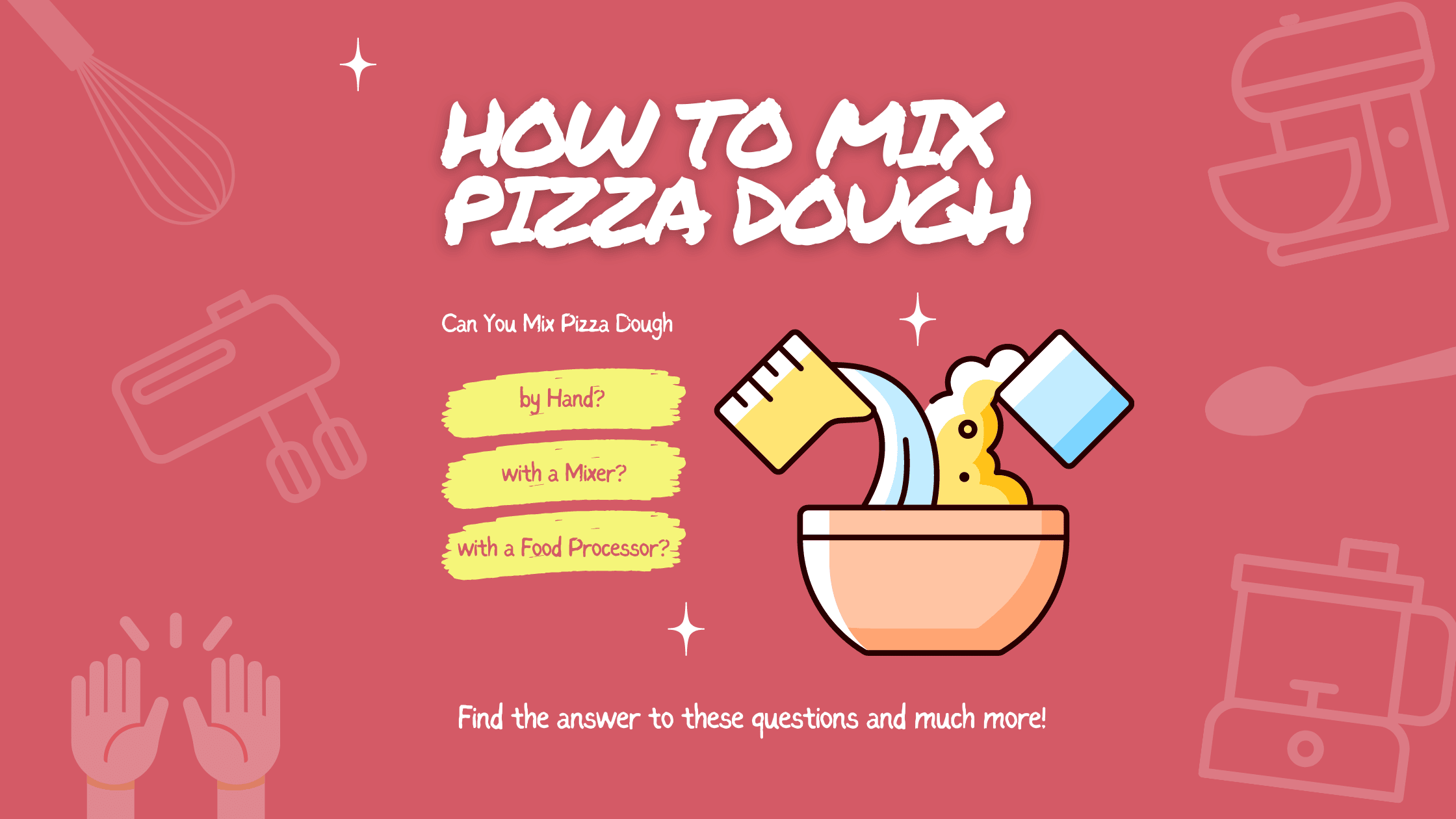
How to Mix Pizza Dough
the PROs
Do you want to learn how to mix pizza dough? Pizza dough is a staple in most households, but it …

Best Water for Pizza Dough: Temperature, Quality, and Hydration
the PROs
In this article, we are going to dive deep into the mysterious ways of water. In conjunction with flour, yeast, and salt, it can make the most spectacular pizza dough.

Salt in Pizza Dough: The Secret to a Perfectly Seasoned Crust
the PROs
Making homemade pizza is not complicated; see how with just a few ingredients like flour, water, yeast, and salt you can do wonders. In this article, we will discuss the role of salt in homemade pizza and discover four (4) basic rules applicable to salt, that are easy to remember that will make you a better homemade pizza baker.

Poke Test Demystified: Master the Technique for Perfect Pizza Every Time
the PROs
Are you tired of ending up with a pizza crust that’s either too thick or still raw in some parts, …
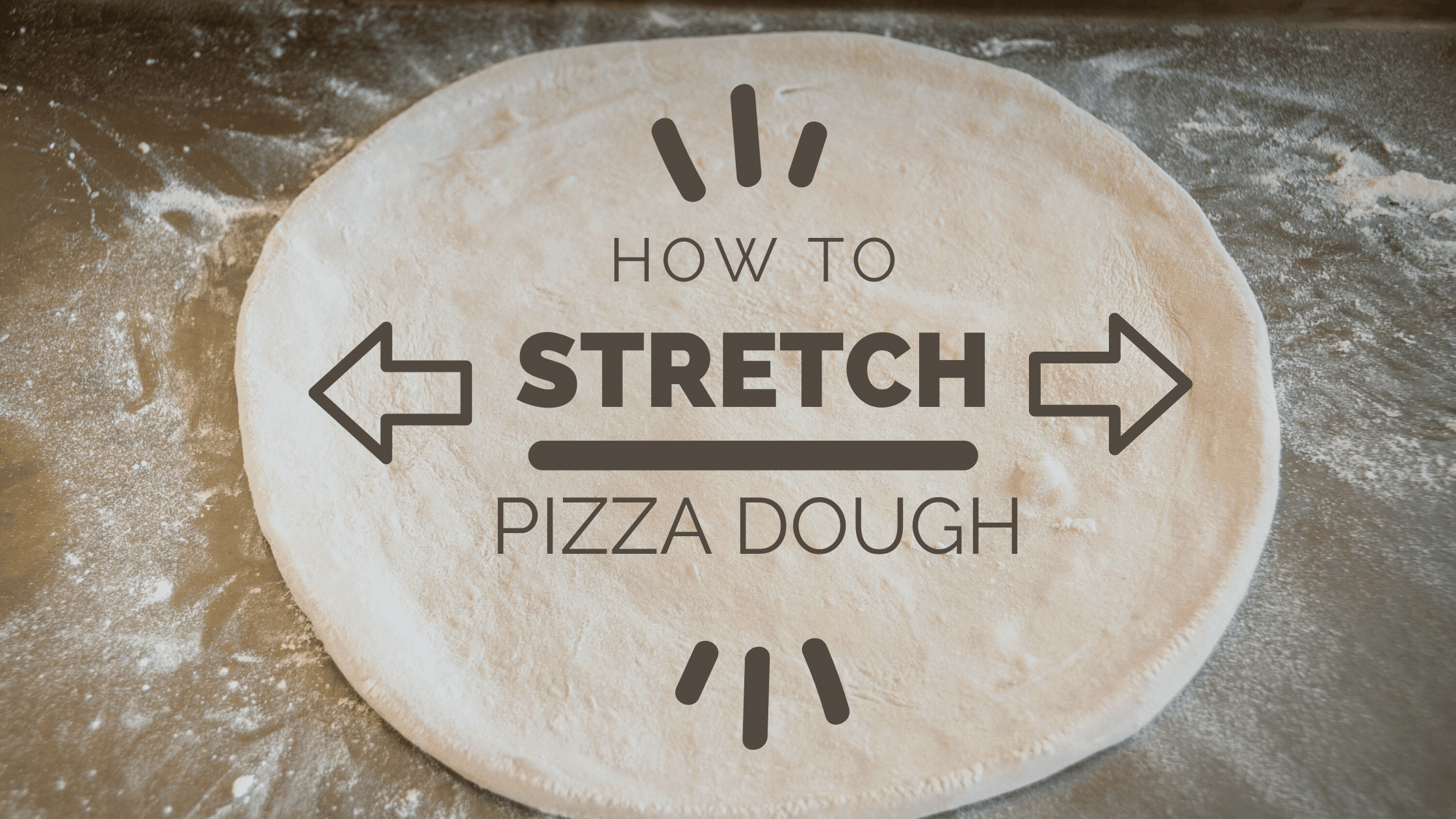
How to Stretch Pizza Dough Like a PRO: Tips and Tricks to Elevate Your Homemade Pizza Game!
the PROs
So you’ve decided to make your pizza but are unsure how to stretch pizza dough to perfection. Well, fear not! …
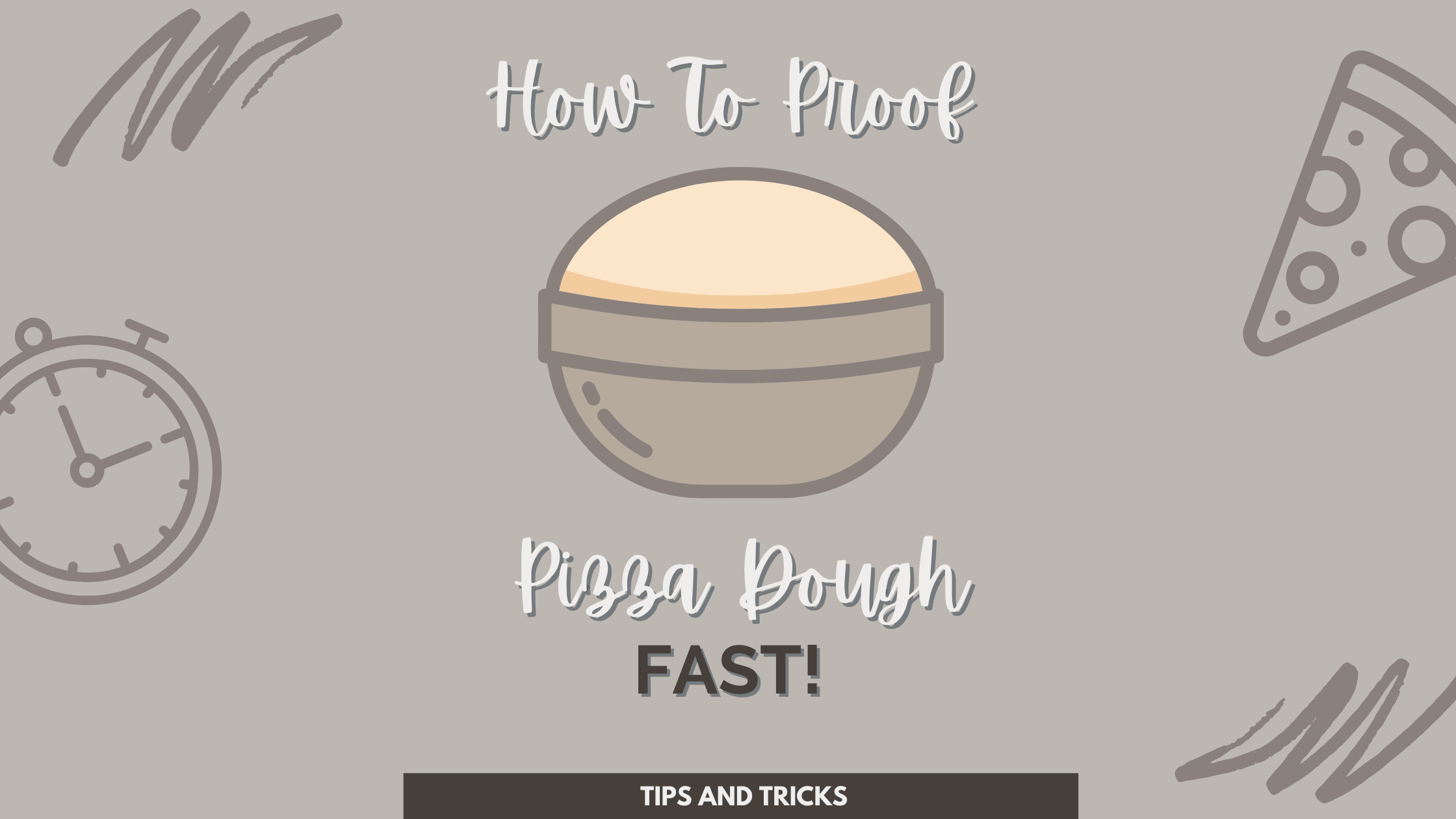
How to Proof Pizza Dough Fast
the PROs
How to Proof Pizza Dough Fast Behind every tasty pizza dough is a secret. Secrets behind its fantastic flavor and …
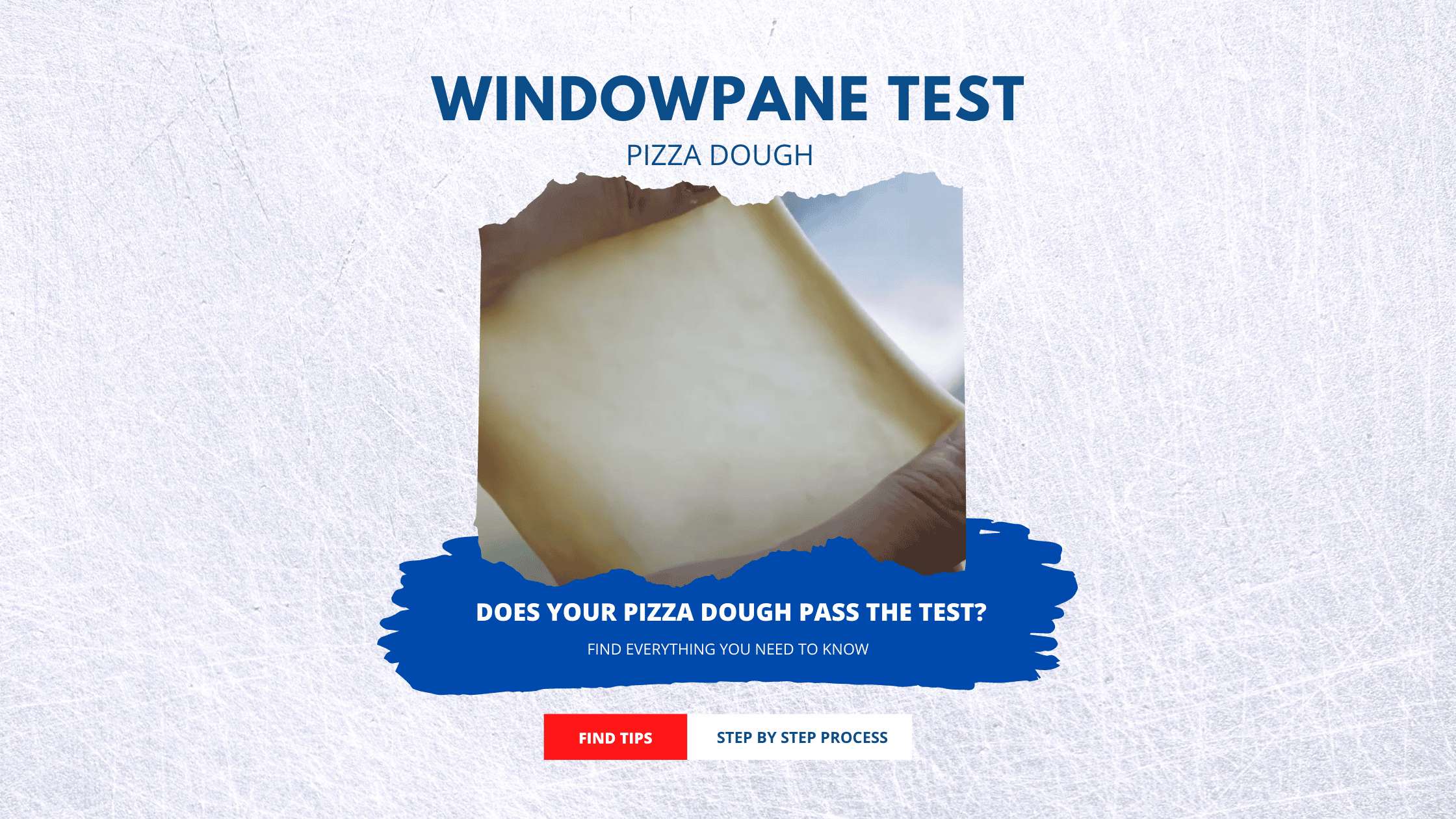
Windowpane Test: (Tips, How-to, and Everything You Need to Know)
the PROs
Pizza Dough Windowpane Test Kneading the dough is probably one of the most complex parts of baking a pizza. You …
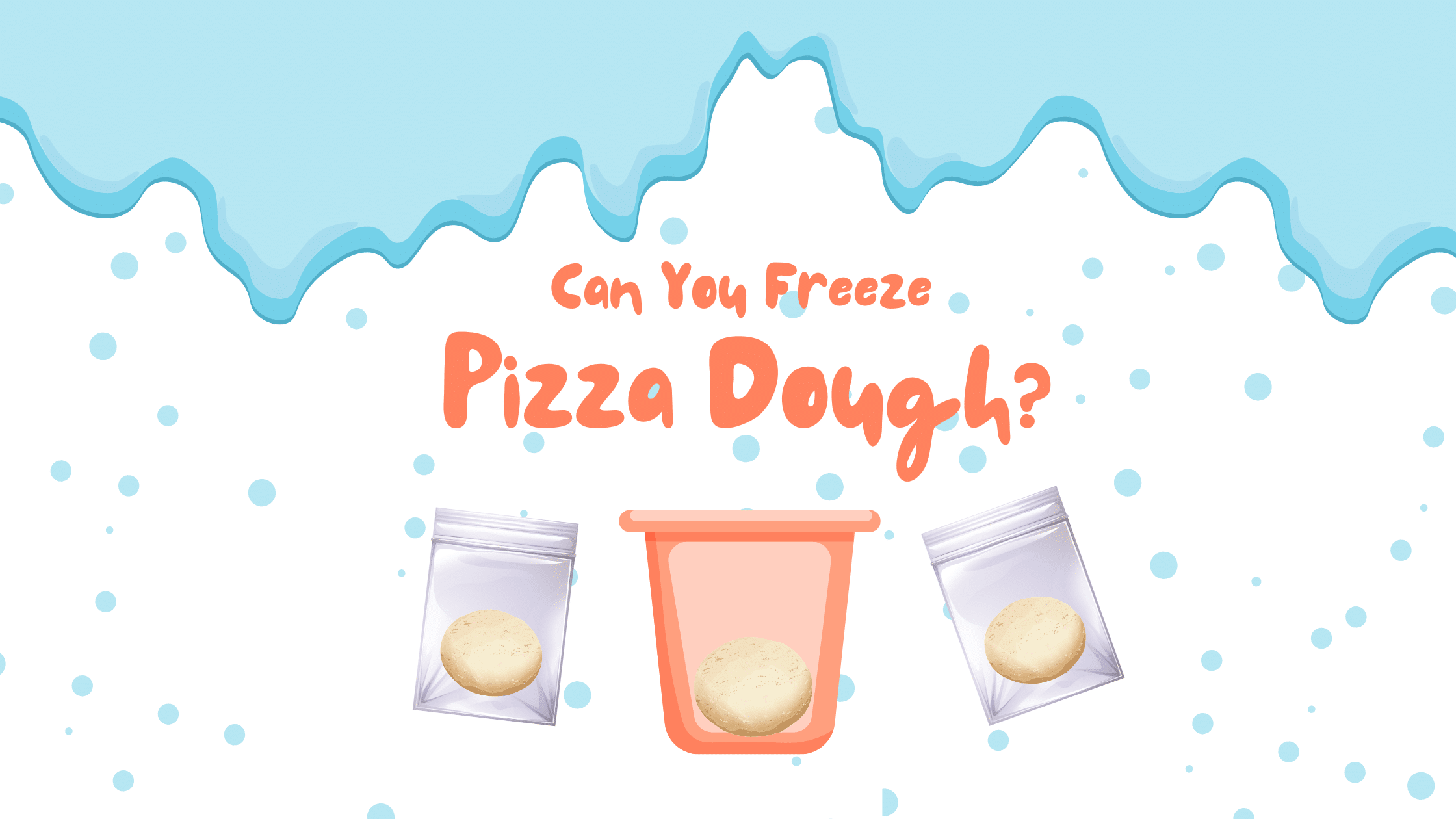
Can You Freeze Pizza Dough? (Everything You Need to Know)
the PROs
How to Freeze Pizza Dough Are you wondering how to freeze pizza dough? Most of us know that putting things …
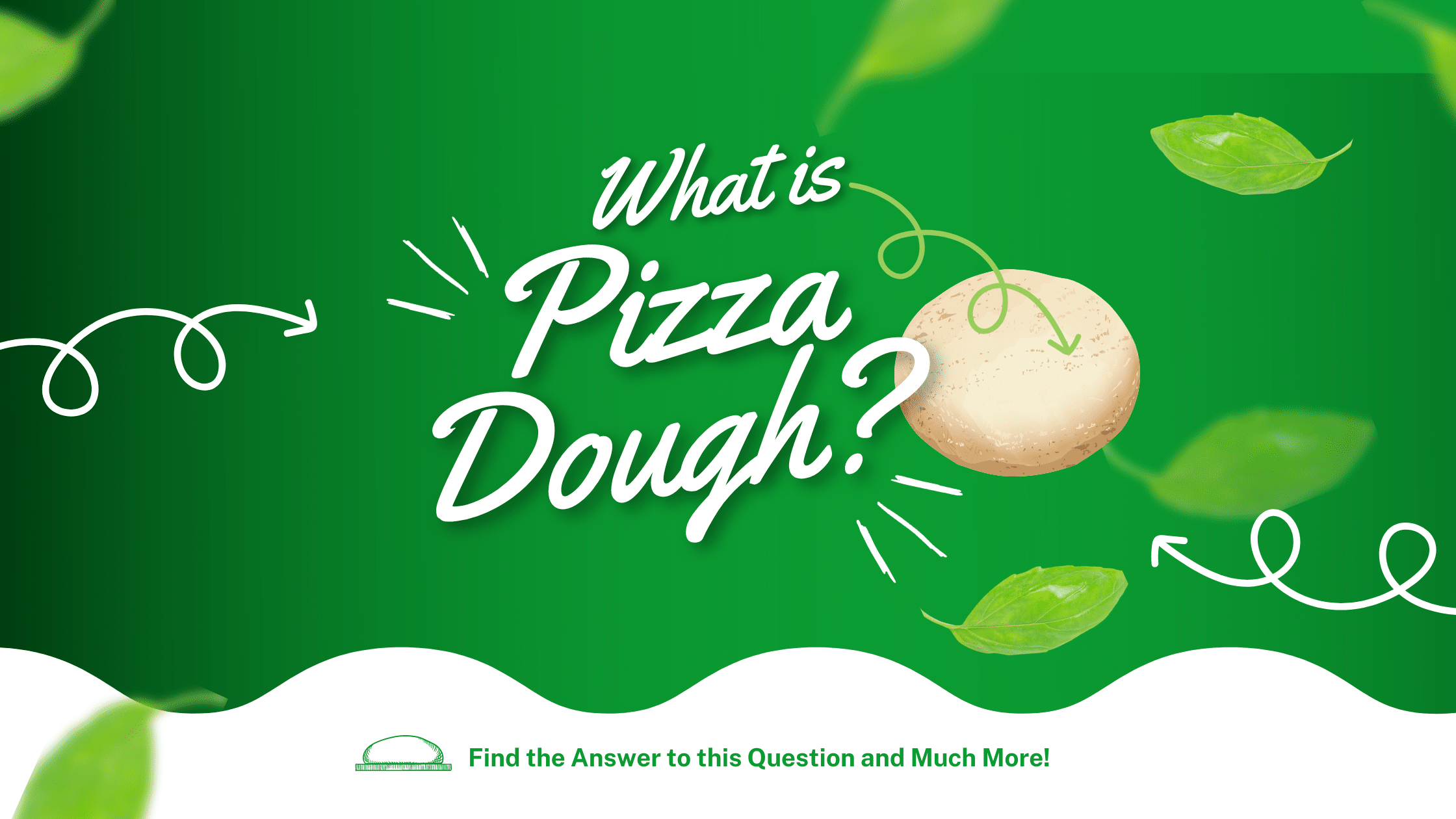
What is Pizza Dough? Here’s What You Need to Know and How to Make It
the PROs
Pretty much everyone likes pizza. But when you first start making pizza at home, you can feel a little overwhelmed. …
Check Amazon’s Pizza-Making Must-Haves
Why have two pizza peels when you can only have one. This pizza peel surpasses the benefits of wood peels with the convenience of a metal peel. It's made entirely from anodized aluminum for a lightweight design that's incredibly durable, too. It's designed to be used frequently in high-heat pizza ovens.
The Etekcity Lasergrip 800 Digital Infrared Thermometer is a versatile and reliable tool for accurate temperature measurements. Its non-contact design allows you to measure temperatures from a distance, making it safe and hygienic for various applications. With a wide temperature range of -58°F to 1382°F (-50°C to 750°C), this infrared thermometer is perfect for both everyday cooking needs and professional uses.
The built-in laser pointer helps you target the specific area you want to measure, ensuring precision and consistency. Whether you're grilling, cooking, or performing household maintenance, the Etekcity Lasergrip 800 provides fast and accurate temperature readings with ease.
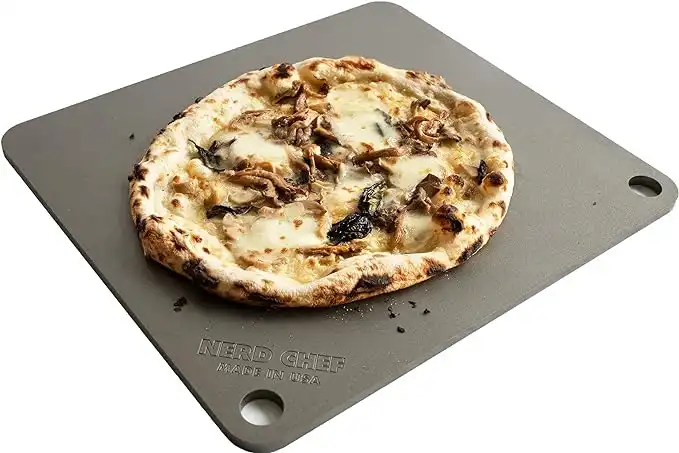 NerdChef Steel Stone
NerdChef Steel Stone
Making great crusts traditionally requires a 700-1000F wood-fired oven. Nerdchef Steel Stone replicates that performance in a home oven with its super-high heat transfer ability - transferring heat energy 20 times faster than ceramic. It creates beautiful and crispier crusts, gorgeous blistering throughout, and it cooks faster.
The Chef's flour is a general-purpose, high gluten flour that works well for many recipes. "Tipo 00" refers to how refined the flour is. Chef's Flour is best for those who want to bake in their traditional home oven up to 500 degrees Fahrenheit!
When in Doubt, Check Our Resources
To help you become a better homemade pizza baker, we developed these reference sources you can use when making any of our recipes.
Enjoy!
Not a PRO? Not a Problem!
Take a pizza class to bring your pizza skills to the next level,
so you can be a PRO!
Related Posts

Costco Pizza Delivery: Find How You Can Get It Now!
the PROs
People go to Costco’s food court for many different reasons, but the cheesy slice of pizza they serve is among …
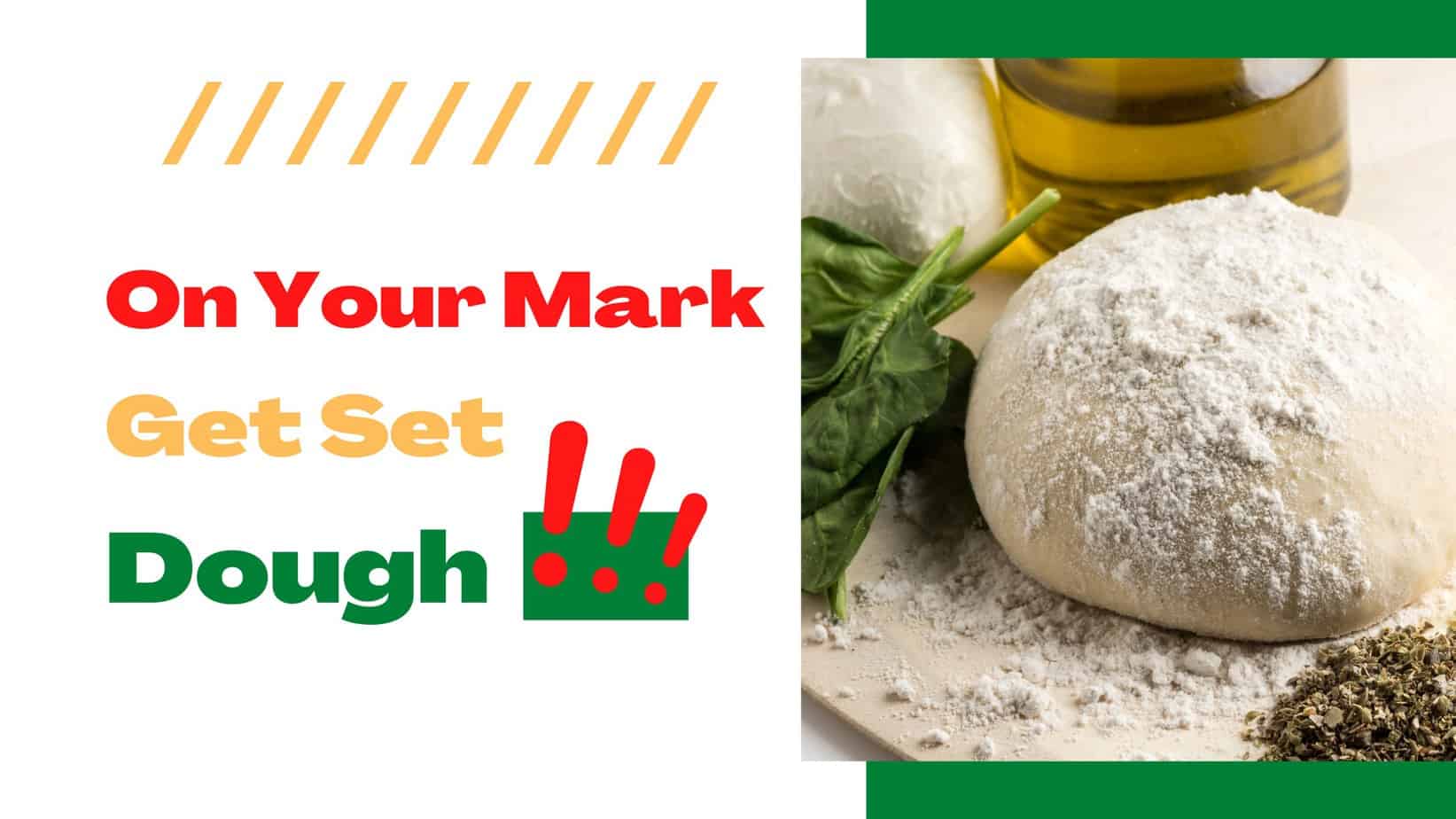
Pizza for Beginners: Don’t Buy Pizza, Make It! Here’s How to Get Started!
the PROs
You have this idea that you want to make pizza at home as opposed to ordering it, but where do you start? Don’t worry! Here you will find answers and directions to all your questions.

Pizza Toppings Under Cheese or Over Cheese? [Why the Order Matters]
the PROs
Is Pizza Cheese on Top or Bottom? Hey pizza lovers, are you wondering if you should layer pizza toppings under …
Newsletter
Subscribe to our Recipe of the Week newsletter and receive our partners’ latest recipes, tips, and discount offers.
Keep in Touch!
